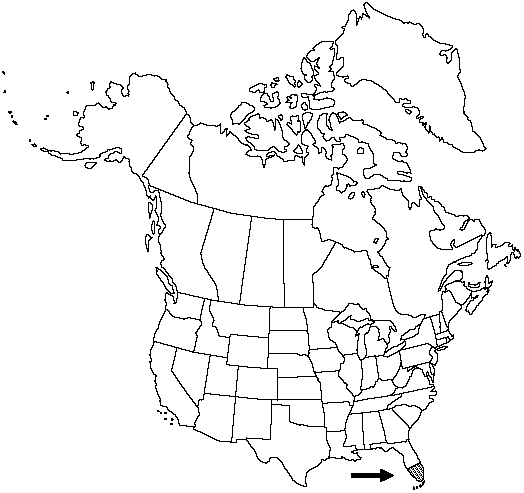Difference between revisions of "Asplenium serratum"
Sp. Pl. 2: 1079. 1753.
FNA>Volume Importer |
FNA>Volume Importer |
||
| Line 45: | Line 45: | ||
|publication year=1753 | |publication year=1753 | ||
|special status= | |special status= | ||
| − | |source xml=https://jpend@bitbucket.org/aafc-mbb/fna-data-curation.git/src/ | + | |source xml=https://jpend@bitbucket.org/aafc-mbb/fna-data-curation.git/src/f50eec43f223ca0e34566be0b046453a0960e173/coarse_grained_fna_xml/V2/V2_420.xml |
|genus=Asplenium | |genus=Asplenium | ||
|species=Asplenium serratum | |species=Asplenium serratum | ||
Revision as of 21:50, 16 December 2019
Roots proliferous. Stems erect, unbranched; scales brown throughout, narrowly lanceolate, 5–10 × 1–1.5 mm, margins entire. Leaves monomorphic. Petiole vestigial. Blade linear, oblanceolate, simple, (10–)20–40(–70) × 3–8 cm, thick, glabrous; base gradually tapered; margins entire to irregularly crenate; apex attenuate, not rooting. Rachis green throughout, dull, glabrous. Veins numerous, free, mostly immersed. Sori parallel to each other, nearly perpendicular to midrib. Spores 64 per sporangium. 2n = 144.
Habitat: Rotten logs and stumps
Elevation: 0–50 m
Discussion
Asplenium serratum is found rarely in southern peninsular Florida, where it is at the extreme edge of its tropical American range. This large simple-leaved spleenwort is called "American bird's-nest fern" because of its superficial resemblance to the Old World A. nidus Linnaeus, which is regularly grown in temperate conservatories. Asplenium serratum is unusual in having roots with abundant, matted hairs rather than scattered hairs as found in other species.
Selected References
None.

